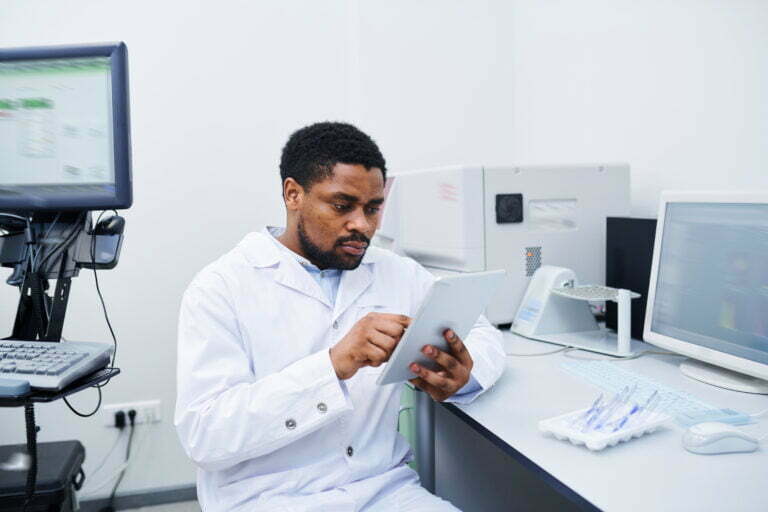Regardless of race or ethnicity, health issues, financial means, or geographic location, all children and adolescents need access to high-quality health care. Missed opportunities for care can have serious immediate and long-term consequences for children’s health, development, and welfare. Remote patient monitoring (RPM) has been used for a long time to help pediatric medical and surgical specialists help some patients who couldn’t travel to get in-person care.
So, how does RPM benefit families and their children?
RPM encourages patients and family members to work together to maintain the patient’s quality of life. The use of RPM improves the quantity of hospital visits while also drastically reducing their duration. Complication risk is also reduced with prompt recognition and management of illness. It also helps to stabilize patient health while the quality of life improves and prevents deterioration of overall health.
Let’s talk more about the 4 ways remote patient monitoring transforms pediatric care. Read more…
1. Remote Patient Monitoring Improves Access to Child Care
The use of pediatric remote patient monitoring enables the patient and their family to have access to the same information as the care team at any time. For some families, learning about pediatric care issues can be difficult. Remote patient monitoring allows patients and their families to communicate with their providers whenever they need it. By addressing warning symptoms early, remote patient monitoring aids health care practitioners in improving patients’ control, preventing or delaying problems, and reducing potential health hazards. The constraints of travel time and location are no longer an issue with the use of remote patient monitoring. Remote patient monitoring also allows patients and their families to communicate with their providers at any time of day or night. The parent or caregiver does not need to arrange transportation or take time off work, and the child is frequently not required to leave school for an in-person visit. Patients who might normally be unable to see specialists owing to geographic restrictions or other impediments can now do so through remote patient monitoring.
Remote patient monitoring allows for immediate assistance when a patient requires it. When a condition worsens, for example, the youngster can contact their healthcare professional. Remote patient monitoring can also be used by behavioral health patients, such as those with eating problems, during stressful moments like mealtime. Pediatric telemedicine, often known as “virtual visits,” allows a child and his or her family to contact their clinician directly and receive help as required.
Pediatric remote patient monitoring can supplement in-person consultations with specialists and pediatricians, allowing for more convenient and cost-effective care. By providing expertise to remote and under-resourced locations and quickly directing patients to the most suitable care facilities, remote patient monitoring helps expand the footprint and depth of pediatric medical and surgical specialties. Appropriate remuneration for services that improve the value of pediatric care by implementing best practices on a timely basis and facilitating appropriate dispositions will help to spread the word about these services. This improves access to pediatric care, improves patient outcomes, avoids unnecessary emergency department and hospital visits, raises patient and family happiness, and also improves pediatricians and pediatric specialists’ coverage of care.
2. Remote Patient Monitoring Provides Comfort to Children
A home is a haven of warmth and support for the majority of youngsters. Children can receive care from home, where they are most comfortable, rather than in an unknown clinic or office with the use of remote patient monitoring. In addition, children and adolescents with particular healthcare needs, such as mental and/or behavioral disorders and medical complexity, and other specific populations that necessitate special consideration that hinders in clinic consults can be reached with remote patient monitoring. Mental and behavioral health services are particularly suited to distant care and can be given with the use of remote patient monitoring.
3. Remote Patient Monitoring Provides Continuity of Care
When an in-person visit is not possible, remote care managed by the medical home can improve access to both primary and specialized care for children. Follow-up care and monitoring of chronic conditions in the subspecialty care setting can expand the reach of pediatric medical subspecialists and surgical specialists, particularly for children who have previously been unable to access care or who have difficulty visiting a care site due to distance or travel issues. Children with special health care needs face additional challenges in receiving primary care, subspecialty care, home health, palliative and/or hospice care, education services, transition to adult care, and developmental and habilitative services, many of which can be alleviated by incorporating remote patient monitoring into the medical home.
Under-resourced communities can also benefit from the integration of remote patient monitoring into the medical home. By extending the reach of medical care at home, remote patient monitoring can help eliminate disparities and enhance children’s overall health and well-being, especially for children with specific health care requirements and children who have not previously had access to high-quality care, including children with chronic illnesses that require continuous care at home. Pediatricians providing remote care should guarantee that these services meet the same standards of care as those provided in person, without spending too much time and resources. Support for the use of remote patient monitoring at home recognizes that remote patient monitoring provides continuity and efficient use of healthcare resources as opposed to the fragmented and episodic care offered without it.
4. Remote Patient Monitoring Promotes Health Equality
Inequity in children’s access to health care services is unfair and undesirable since it leads to unequal care and worse outcomes for those who do not have access. By bringing pediatric expertise and best practices to children no matter where they are situated, remote patient monitoring can help to reduce gaps in access to care. By minimizing the number of trips to the hospital for follow-up appointments, remote patient monitoring increases health equality for families who must travel long distances to see their specialists. Remote patient monitoring can help to reduce exacerbated inequality and other impediments such as language, digital literacy, handicap, and access to healthcare, ensuring that everyone has access to healthcare. Every individual, especially those in under-resourced areas of the country, both urban and rural, can have access to healthcare and even specialized care with the use of remote patient monitoring. Remote patient monitoring offers the advantages of bridging distance and location while also improving outcomes and lowering the total cost of care.
Remote patient monitoring can also augment the availability of care in preoperative and postoperative surgical care, consultation, and management of complex and chronic conditions, where in-person care cannot be done due to distance, financial constraints, specialist availability, or travel restrictions. The use of remote patient monitoring ensures that every individual has access to care despite the hindrances. Remote patient monitoring helps make it easier for more advanced, efficient, and patient-centered care management to happen, as well as for patients to stay on track.
Takeaway
Remote patient monitoring in pediatric care can be a highly useful tool for children, since it allows children and their families to interact with various sorts of healthcare providers. Through providing tools for virtual visits, medication management, symptom questionnaires, and biometric monitoring, remote patient monitoring technologies assist pediatric patients in managing their disease and avoiding negative outcomes. Remote patient monitoring also gives critical instruction and support to the family or caregiver within the comfort of their homes providing easier access to care and promoting continuity of care in any walk of life.








